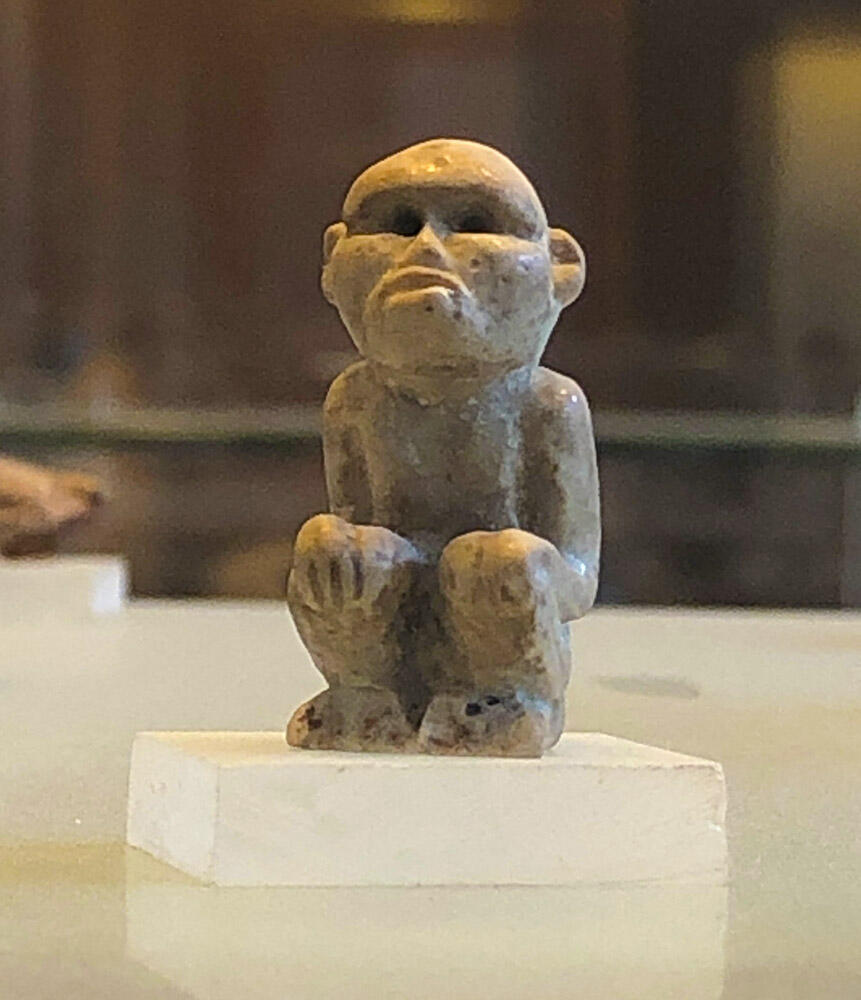Another example where Indus craftsmen are able to imbue a tiny figurine with indelible character.
Marshall wrote (Mohenjo-daro, pp. 351):
"No 13 (DK 2091), which is 1.5 inches high, is a delightful little figure of a monkey squatting with hands on knees [footnote This position is also very usual in the monkey figures of Elam. FOr instance, Mem. Del. en Perse, t. xiii, pl. xxxiv, figs 5 and 7]. As the eyesockets are so very deep, there is a possibilitythat they were once inlaid. It was found in one of the trial trenches in DK Area and belongs to the Lte Period. Chamber 1, Block 2, DK Area."
Dr. Kenoyer writes (Ancient Cities, p. 131):
"Pet monkeys were also probably a common sight in the bazaars or neighborhood markets. Figurines of monkeys were made of terracotta or glazed faience (fig. 7.13 [above]), depicting one or more monkeys in various amorous or acrobatic poses (see cat. no. 175). All the monkey figurines are of the short-tailed rhesus or macaque species, but the long-tailed langurs would have been known to the Indus people living in Gujarat and the northern Punjab, because this species is quite common throughout these regions today. The fact that they did not make any figures of the long-tailed monkeys is quite intriguing, and it is also odd that no monkeys are illustrated on the seals or narrative tablets. The Harappan bias against depicting monkeys in glyptic art is one of the important differences with later Hindu art, where monkeys are a common motif and the long-tailed langur is directly associated with the deity Hanuman."
His catalogue description (p. 230):
"Seated monkey figurine amulet. The broken feet indicate that this piece was originally attached to another object, possibly a second monkey."
Molded and carved.
Material: Blue green glazed faience
Dimensions: 3.1cm height
Mohenjo-daro
National Museum, Karachi, M 842
Marshall 1931: 349, 351, pl. XCVI, 13

